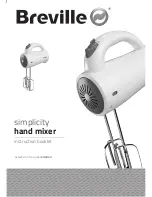
TASCAM DM-24 Effects
11
3 – Antares microphone modeling
NOTE
All names of microphone manufacturers and micro-
phone model designations appearing in this manual
and on the DM-24 are used solely to identify the micro-
phones analyzed in the development of the digital
models and do not in any way imply any association
with or endorsement by any of the named manufactur-
ers.
This effect allows you to model the characteristics of
a particular model of microphone and apply it to the
microphone you are actually using.
In addition to reproducing the sonic characteristics of
the modeled microphones, this effect also allows for
the reproduction of certain options on the modeled
microphone (for example, low cut filters, etc.).
Typically, you will want to “re-record” already
recorded tracks with another microphone model at
the mixdown stage, as this allows you to experiment
with settings.
When you use the modeler at the mixdown stage,
though, it is important that you have clear and
detailed notes of the microphone conditions which
were used to make the original recording.
Among other useful information which should be
noted when the recording is made:
• Type of microphone
• Distance of source from microphone
• Any filter settings made on the microphone
• The response pattern used when recording
Of course, it is also possible to record directly using
one physical microphone and modelling another, but
in this case, it is more difficult to experiment, and to
make changes afterwards.
Note that when we talk about the microphone mod-
eler, we use the term
source
microphone to describe
the actual physical device and the description of it in
the modeler, and
model
to describe the target, virtual
microphone.
The diagram below gives an approximate idea of how
the parameters available interact with each other (sig-
nal flow may be taken as being from left to right).
Limitations
Be aware, though, that while the microphone model-
ling will produce excellent effects, it is not capable of
producing something from nothing. In other words, a
poor recording made with a cheaper source micro-
phone will not be magically transformed into a good
recording, if an expensive microphone model is
selected—it will still sound like a poor recording, but
made with an expensive model.
Nor can the microphone modeler magically restore
missing parts of the signal which are missing because
of the limitations of the source microphone. If a
cheap microphone with limited bass response is used
to record, using an expensive model with the micro-
phone modeler will not put the missing bass back
into the recording.
Input level
Source mic type
Preserve source
(bass and treble)
Model mic type
Tube saturation
Output level
Source mic
proximity
Model mic
proximity
Source mic
low-cut
Model mic
low-cut
Source mic
response pattern
Model mic
response pattern
Содержание DM-24
Страница 1: ...DM 24 Digital Mixing Console to EFFECTS MANUAL...
Страница 31: ......












































